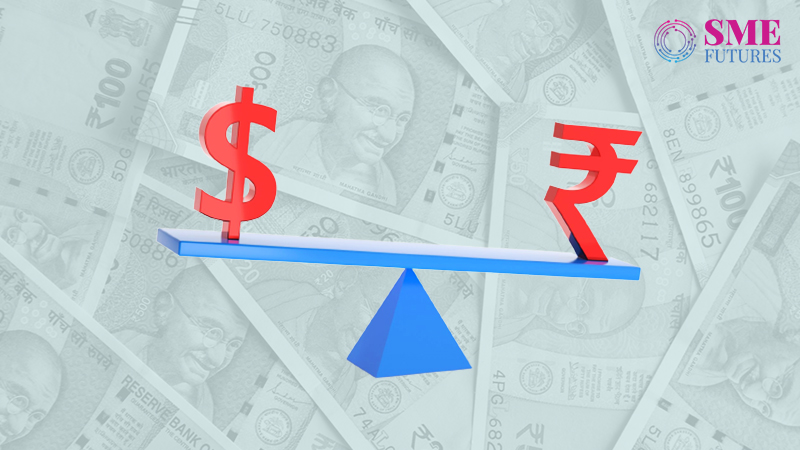Since the beginning of the Russia-Ukraine crisis, the Indian rupee has depreciated by nearly 7%, hovering close to 80 per US dollar. The rupee’s depreciation is the result of a number of factors, including rising geopolitical and insecurity risks, soaring energy prices, and the subsequent outflows of Foreign Institutional Investors (FIIs). To date, in this calendar year, FIIs have withdrawn a record US$ 30 bn.
The weakening of the rupee will have disproportionate direct and indirect effects on the Micro, Small, and Medium Enterprises (MSMEs). MSMEs that have outstanding debt denominated in dollars will witness an increase in their debt servicing costs, as they will need more rupees to repay the same dollar amount. The weakening of the rupee and an increase in interest rates will be a double blow for MSMEs with floating-rate debt. Businesses that relied on a flood of cheap liquidity in the capital markets during the pandemic but have not made operational transformations or strategic realignments for the post-pandemic era, may find themselves in the midst of a very real existential crisis in 2022.
Also Read: Walmart and Flipkart sign MoU with Assam government to support MSMEs
The vulnerability of these businesses does not stem from their exposure to foreign debt alone, but rather in combination with the asset side of their balance sheets. In other words, businesses that utilized foreign funds to create financial assets in domestic currency are at elevated levels of risk given the depreciation of the rupee.
Theoretically, exports should increase as the rupee’s depreciation improves the competitiveness of domestic goods. However, the external scenario is not conducive for exports to grow or sustain for two reasons. Firstly, the currencies of other major economies have depreciated more rapidly than the rupee since the beginning of the Russia-Ukraine crisis.
The Japanese yen declined by 20.4%, the Pound sterling by 14.4%, the Euro by 12.3%, the South Korean won by 10.9%, and the Chinese yuan renminbi by 7%. Secondly, consumer confidence, a surrogate for global demand, reached its lowest level since at least 1960 in the US and the 1970s in the UK and Euro area (19 countries), when the index was instituted for these countries, according to data from the Organisation for Economic Co-operation and Development (OECD).
As consumers grapple with the higher cost of essential goods, their discretionary spending will decrease. The World Bank expects global growth to slump from 5.7% in 2021 to 2.9% in 2022 – significantly lower than the previously anticipated growth rate of 4.1% for 2022. Mirroring the trend in global growth, global trade is estimated to increase by only 4% in 2022, significantly lower than the previously anticipated rate of 5.8%.
Also Read: At least 42% Indians experienced financial fraud in last 3 years
On the other hand, MSMEs that have a high import dependency and no or limited alternate domestic suppliers will be negatively impacted. Dun & Bradstreet’s analysis of around 1,500 MSMEs, which reported data on import of raw materials and export earnings, finds that 39% of MSMEs have a higher import bill than their export earnings, and the import bill of another 15% of the MSMEs constitutes between 50% to 100% of their export earnings. These MSMEs are at a high risk of margin erosion.
Even if MSMEs do not have external commercial borrowings and do not engage in international trade, they would nonetheless be affected by negative macroeconomic conditions. As per estimates from the IMF, close to 90% of India’s overall import invoices are billed in dollars. The near inelastic demand for crude oil, which accounts for almost one-third of India’s imports, further worsens the situation. This increases the risk of imported inflation and results in policy rate hikes. As a result, businesses’ new investments and consumers’ real income may suffer, resulting in a further decline in aggregate demand. Hence, the fall in the rupee could do more harm to MSMEs than good. On the positive side, the Reserve Bank of India (RBI) is in a considerably stronger position than it was during the previous crisis to slow down the rupee’s free fall.











